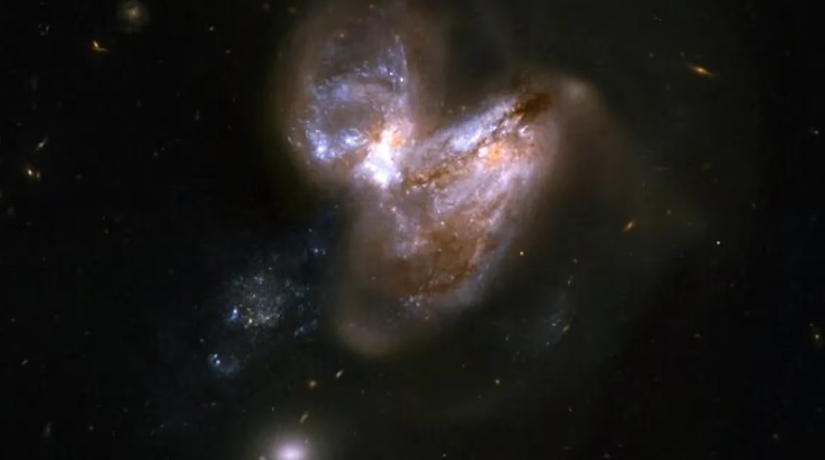ADRID (DPA): Astronomers at the University of Texas and the University of Arizona. Discovere a fast-growing black hole in one of the most extreme galaxies known from the early Universe.
The discovery of the galaxy and the black hole at its centre provides new clues. The formation of the first supermassive black holes. The new work is publishe in Monthly Notices of the Royal Astronomical Society.
An extreme supermassive black hole lurks at the edge of the universe
Using observations made with the Atacama Large Millimeter Array (ALMA). A radio observatory located in Chile, the team determined that the galaxy. Calle COS-87259, containing this new supermassive black hole is very extreme, forming stars at a rate 1000 times faster than our Milky Way and containing more than a billion solar masses of interstellar dust. The galaxy shines both because of this intense burst of star formation and because of the growing supermassive black hole at its centre.
The researchers also discovered that this growing supermassive black hole (often referred to as an active galactic nucleus) generates. A powerful jet of material that travels at near-light speed through its host galaxy.
At the centre of almost all galaxies today there are black holes with masses millions to billions of times greater than that of our Sun.Because the light from these sources takes so long to reach us. We see them as they existed in the past – in this case, only 750 million years after the Big Bang, which is about 5% of the current age of the Universe.
The most surprising thing about this new object is that it was detecte in a relatively small area of sky (less than 10 times the size of the full Moon). Suggesting that there could be thousands of similar sources in the early Universe. This is a completely unexpecte finding from previous data.
The only other class of supermassive black holes that we knew of in the early Universe were quasars. Active black holes that are relatively poorly by cosmic dust. These quasars are extremely rare at distances similar to COS-87259, with only a few dozen located across the entire sky. The surprising discovery of COS-87259 and its black hole raises several questions about the abundance of very early supermassive black holes. As well as the types of galaxies in which they tend to form.
Ryan Endsley, lead author of the paper and now a postdoctoral fellow at the University of Texas at Austin, says in a statement: „These results suggest that early supermassive black holes were often heavily obscure by dust, perhaps as a consequence of intense star formation activity in their host galaxies. This is something that others have been predicting for some years now, and it is really nice to see the first direct observational evidence to support this scenario.”
Similar objects have in the more local present-day Universe. Such as Arp 299 shown here. In this system, two galaxies collide. Generating an intense starburst, as well as a strong dimming of the growing supermassive black hole in one of the two galaxies.







